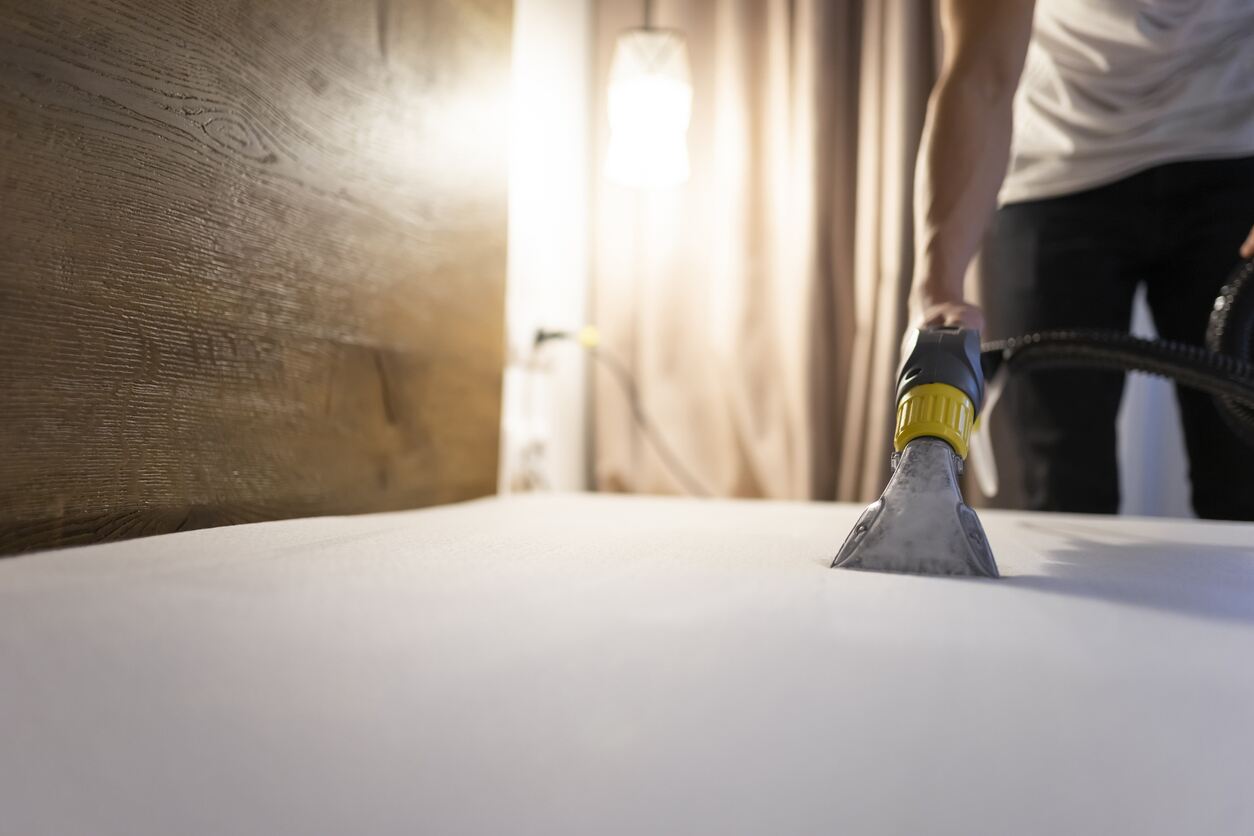
What are dust mites?
Dust mites are microscopic creatures barely visible to the naked eye. They’re found in areas where dust gathers in the house and, inconveniently, thrive in the bedroom. Pillows, mattresses, duvets, linens and bedroom furnishings hold a high amount of human skin cells – which dust mites feed on.
Not-so-fun facts about dust mites:
Adult dust mites are only about one-third of a millimetre in size
- Humans shed up to 1.5 grams of skin a day (enough to feed one million dust mites)
- A female dust mite can lay up to 60-100 eggs in her last five weeks of life
- A dust mite can produce roughly 2,000 faecal particles in its lifetime of three-four months
Can I be allergic to dust mites?
Yes, unfortunately, dust mites are well known for causing allergies. They don’t bite, instead irritation is caused by a protein in their droppings – made up mostly of skin and faecal matter. Delightful. When we breathe this in, or it touches our skin, our immune system can respond abnormally by releasing histamine from the body.
Symptoms
Those who have an allergy to dust mites experience symptoms throughout the year, with symptoms often worsening during humid and warmer months.
Symptoms include:
- Itching to the throat, sinus and nose (this is called rhinitis)
- Itchy eyes
- Itchy or red skin
- A runny or blocked nose
- Sneezing
- Coughing
- Wheezing
- Loss of smell
How can I treat an allergic reaction?
It’s first important to see your GP if you think you’ve had an allergic reaction to dust mites. Your doctor will help to determine the cause, asses the severity, give advice, provide treatment options, and explain ways to manage the condition.
In the meantime, the NHS suggests managing an allergy with these treatments:
- Antihistamines
- Decongestants
- Lotions and creams
- Steroid medicines
- Immunotherapy
The best way, however, is to avoid the allergen causing you to have a reaction – in this case dust mites.
How can I make my bedroom dust mite-free?
Completely dust mite ‘free’ isn’t always achievable. But while you might not be able to entirely eradicate the pests, these tips will certainly help:
- Use allergy protected covers on pillows, duvets and mattresses
- Wash your bed linen, cushions and curtains weekly at a high temperature
- Clean upholstered furniture
- If you have a child who has soft toys, make sure you wash them regularly, or even freeze them for 24 hours
- Use a vacuum cleaner with a HEPA (high efficiency particulate air) filter
- Dust your bedroom in any areas that might gather dust with a damp cloth
- Get some air in the room by opening the window when you can





